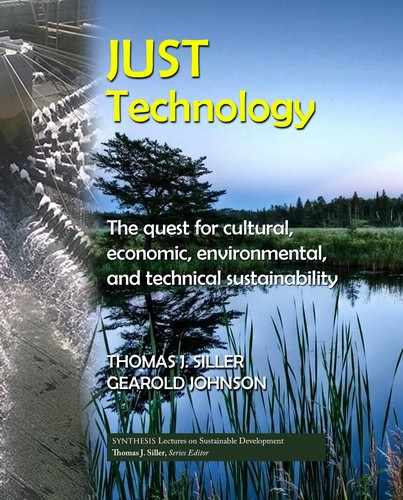5.6. SUMMARY 39
base. Of course, there have been traditional indigenous peoples who have always considered fu-
ture generations explicitly in their decision making, but this has/is not the case in traditional
engineering design. Other “clients” to be added to the mix are both the physical and social en-
vironments. ese are not as easily communicated with, but the concerns of these clients can be
addressed, at least implicitly, through the asking and subsequent answering the three questions
in this chapter. Technology solutions impact all of these “clients” whether they are considered
in the design process, so we advocate considering them at the beginning.
For engineers to broaden their approach to design in the manner we advocate they must
extend their thinking beyond their narrow domains of specialization [60]. Engineers need to
develop a broader understanding of the impact of technology on society. But it is important to
recognize that engineers cannot have all the knowledge necessary to answer all the questions we
ask in this chapter. erefore, interdisciplinary approaches are required to address the problems
being faced in the 21st century. Engineers need to learn how to work with other disciplines.
5.6 SUMMARY
Before closing this chapter, it is valuable to use an example to look at all three sub-questions.
Example 1 (Section 5.7) presents a look at the storage of nuclear waste generated by human
activity. As this example highlights all three of the questions posed above are answered in the
affirmative. is means that the storage of nuclear waste is a challenge that meets the definition
of a challenge that needs to be addressed. As the following chapters will address, once we have
determined that something needs to be done, we next need to consider how we will justly attempt
to address the challenge.
..................Content has been hidden....................
You can't read the all page of ebook, please click here login for view all page.
